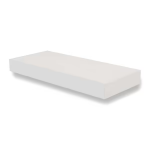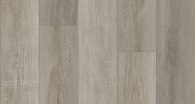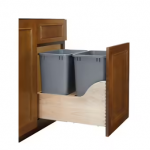What’s the dirtiest, most germ-filled place in your home? If you guessed the kitchen, you’d be right. Kitchen germs are notorious.
Consider these statistics:
- 500,000 is the typical number of different bacteria per square inch in your kitchen drain alone. Yuck.
- Sponges are often the most contaminated thing in your house. They can harbor billions of bacteria including staphylococcus or salmonella, both of which can result in food poisoning.
- The kitchen faucet handle contains more than 13,000 different bacteria per square inch. And the kitchen floor, in front of the sink, has 830 different bacteria per square inch.
- And get ready for this one. The kitchen cutting board has about 200 times more fecal bacteria than is typically found on a toilet seat.
With bacteria and other germs hiding around in sponges, sinks, countertops, cabinet handles and appliances, anyone can see why the kitchen can be such a dangerous place. It’s almost enough to make even domestic maven Martha Stewart run from the kitchen. We said almost because we all know kitchen germs don’t really scare her.
First let’s talk about how kitchen germs are spread, then we’ll discuss what we can do to wage a household war against them.
How Kitchen Germs Are Spread
Dishcloths, towels and sponges can trap the germs and allow them to breed. And all too often the same sponges or towel is used to wipe down everything in the kitchen, spreading the germs from place to place. Or our hands come in contact with the germs and then we open the refrigerator, turn on the sink, pull open a drawer and wipe them on a towel. As you can see, it’s really a job for Mr. Clean, or Martha or even you, armed with the right weapons.
How to Fight Spread of Germs
Just like your mom told you years ago, always wash your hands with soap and water. This can go a long way in fighting kitchen germs. Instead of wiping your hands on a cloth towel during food preparation, use paper towels and then dispose of them. Also use paper towels and a vinegar and water solution for cleaning kitchen counters and other surfaces. Be careful when handling various foods, especially meat, and make sure you cook all food at the right temperature to kill off germs. And then wash your hands again.
How to Prevent the Spread of Germs
Another way to battle kitchen germs is by preventing opportunities for them to spread. Consider quartz countertops for the kitchen. Because they are non-porous, they are easier to keep free of germs and bacteria. They’re also easier to keep free of stains. Also consider upgrading to a motion-sensor faucet in the kitchen. Don’t you love these? This eliminates one more handle you need to touch during meal preparation, which is one less place to spread germs.
As an online supplier of wholesale cabinets to contractors, CabinetCrop is interested in all things having to do with kitchens and bathrooms in the home, including germs. By helping to inform contractors and regular readers of this blog about ways to fight kitchen germs, we’re helping you become more knowledgeable kitchen experts.
What do you think of these ideas for fighting kitchen germs? Do you have more tips to share? Please reach out to us on any of our social channels. Want to share this article? We’ve got the tweet ready for you!
With 500,000 kinds of bacteria #germs lucking in your #kitchen, let the battle begin: http://t.co/v222AdjiV9
— CabinetCorp (@CabinetCorp) July 28, 2014





























































